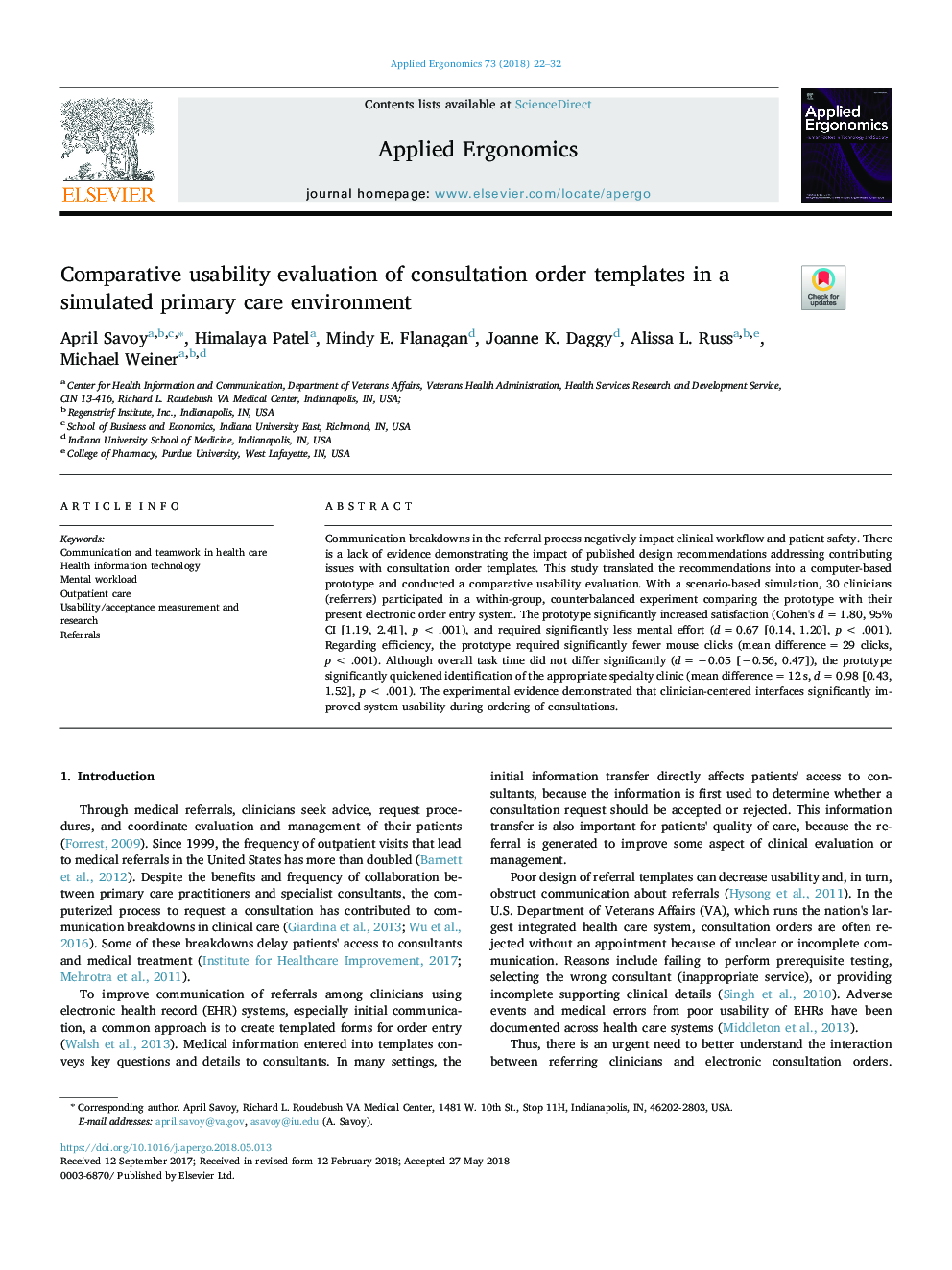| Article ID | Journal | Published Year | Pages | File Type |
|---|---|---|---|---|
| 6947540 | Applied Ergonomics | 2018 | 11 Pages |
Abstract
Communication breakdowns in the referral process negatively impact clinical workflow and patient safety. There is a lack of evidence demonstrating the impact of published design recommendations addressing contributing issues with consultation order templates. This study translated the recommendations into a computer-based prototype and conducted a comparative usability evaluation. With a scenario-based simulation, 30 clinicians (referrers) participated in a within-group, counterbalanced experiment comparing the prototype with their present electronic order entry system. The prototype significantly increased satisfaction (Cohen's dâ¯=â¯1.80, 95% CI [1.19, 2.41], pâ¯<â¯.001), and required significantly less mental effort (dâ¯=â¯0.67 [0.14, 1.20], pâ¯<â¯.001). Regarding efficiency, the prototype required significantly fewer mouse clicks (mean differenceâ¯=â¯29 clicks, pâ¯<â¯.001). Although overall task time did not differ significantly (dâ¯=â¯â0.05 [â0.56, 0.47]), the prototype significantly quickened identification of the appropriate specialty clinic (mean differenceâ¯=â¯12â¯s, dâ¯=â¯0.98 [0.43, 1.52], pâ¯<â¯.001). The experimental evidence demonstrated that clinician-centered interfaces significantly improved system usability during ordering of consultations.
Related Topics
Physical Sciences and Engineering
Computer Science
Human-Computer Interaction
Authors
April Savoy, Himalaya Patel, Mindy E. Flanagan, Joanne K. Daggy, Alissa L. Russ, Michael Weiner,
